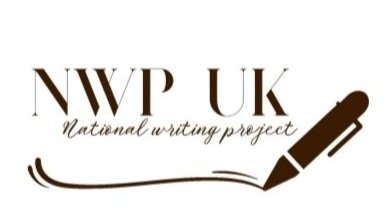11. Food memories
Geraghty, M. (2009) The Five-minute Writer: Exercise and inspiration in creative writing in five minutes a day. Oxford: How To Books.
Does what it says on the tin. So, useful when you are short of either.
Geraghty, M. (2009) More five-minute writing. Oxford: How To Books Ltd.
More of the same.
What are your food memories? Best-selling author Wendy Holden once described hers as The Mr Whippy ice cream van outside her home in Cleckheaton, West Yorkshire. The taste was ‘intoxicatingly blended with the fumes from the exhaust.’ Make a list of your own food memories, or, if you prefer, do a creative search. Start with your earliest – some of my students remember Farley’s rusks – and work forwards. Then, choose one of your memories to write a longer piece
12. quality of light
Goldberg, N. (1986) Writing Down the Bones: freeing the writer within. Boston & London: Shambhala.
Goldberg, N (1991) Wild Mind: living the writer’s life. London: Rider.
These two are classics, particularly Writing Down the Bones. They appear on many reading lists and provide a combination of reflection, writing life advice and ideas for writing. Lots of lovely stuff. Dip in and out of them.
From ‘a list of topics for writing practice’ in Writing Down the Bones:
Tell about the quality of light coming in through your window. Jump in and write. Don’t worry if it is night ad your curtains are closed or you would rather write about the light up north – just write. Go for ten minutes, fifteen, a half hour’
13. As if you were laying bricks
Goldberg, N (1991) Wild Mind: living the writer’s life. London: Rider.
Raymond Carver said in Fires that once he had the first sentence of a short story, he made the rest of the story as he made a poem: “one line and then the next, and the next.”
Now find a sentence you like that comes from you. Don’t be picky with your mind; instead, feel the sentence’s integrity with your body. It can be a simple line. “I fell in love with my life one Tuesday in August.” Now go ahead and lay down the next line and the next. Don’t think further ahead than the next line. Don’t think back. Just build that story.
Let the structure of the story unfold, one sentence after another. Place those sentences down, as if you were laying bricks. Keep each on true.
14. Sprinting
Goldberg, N. (2007) Old Friend from Far Away. The Practice of Writing Memoir. New York, London NY: Free Press.
Natalie Goldberg writes with great warmth and encouragement. It is possible to take ideas from anywhere in the book or to use it as the basis for a quite intense approach to writing memoir. One of the things Goldberg does well is to suggest ideas from an unusual angle so that one doesn’t think about one’s long, dull life and go into a quick decline. Her approach to writing memoir provides prompts for the individual and for the workshop leader that are both reassuring and surprising. Here's a sample:
Sprinting
Let’s look at the idea of sprinting. In truth, ten minutes is a long sprint.
Do three-minute sprints with each one of these:
cantaloupe
cow
breast
window
urine
pillow
swimsuit
vanilla
It’s good to get a list from someone else. Yu end up writing about things you wouldn’t have thought of on your own. It stretches you. Write absolutely anything that comes to mind for each thing. Up from under, the crazier the better.
It’s also good to make your own list of eight things to sprint about. Don’t think. Anything that comes to mind, jot it down.
Then run for your life. Three minutes of writing on each. Go down the list. Don’t discriminate.
Sprinting is giving the mind a workout, getting it limber and open. Move that hand, grease those ball bearings inside your head. Keep them rolling.
15. Fallow
Heard, G. (1995) Writing Toward Home: Tales and Lessons to Find Your Way. Portsmouth NH: Heinemann.
You are in safe hands with Georgia Heard. The format of this book is similar to that of books by Natalie Goldberg: some personal reflection, usually about some aspect of writing, followed by an extended prompt to write. There is a good deal of variety and many prompts invite the reader/writer to do something as well as simply to sit down and write.
Fallow
If you’re experiencing a fallow time, make a list of the other things you’ve been wanting to do if you weren’t writing. Here’s your chance. The most important thing to remember is that despite the silence something is gestating inside your writing mind and needs to be quiet for a while. In the words of Theodore Roethke, ‘It will come again. / Be still. / Wait.




